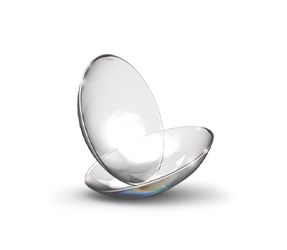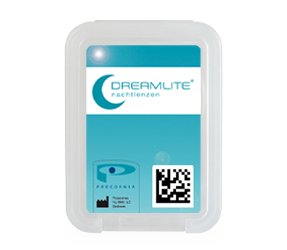DreamLite® night lenses

In at night, out during the day. Experience the freedom of sharp vision without (reading) glasses or lenses.
DreamLite® night lenses correct your eyes while you sleep without you noticing. When you get up you take them out and have perfect vision all day. Freedom of movement and comfort, all day long!

Features of DreamLite® night lenses:
- No need for lenses or glasses during the day; complete freedom of movement
- Safe and fully reversible correction
- A good alternative to laser treatment

DreamLite® night lenses are only suitable for people with myopia, or nearsightedness. This means you have a minus strength. DreamLite has a range of -0.75D to -5.00D. In addition, a cylinder can be corrected to as much as -2.50. Do you use a reading addition? Then DreamLite® Zoom is the solution for you, with an addition of up to +1.50D. Sharp vision all day at all distances. Tip: Always ask for the original DreamLite night lenses, recognizable by the DreamLite logo!
If you are nearsighted, your eye is a little too long, so to speak. The special shape of the lens makes your cornea slightly flatter at night, thereby correcting your eye defect. This is also called orthokeratology or ortho-k. Think of it as a brace for your eyes. During the day, your eyes get complete rest without glasses or lenses. They’re perfect for sports enthusiasts, people who sometimes suffer from dry or sensitive eyes or those who don’t want to wear glasses or lenses during the day. The process is 100% reversible: if you want to stop using DreamLite for any reason, your eyes will return to their original form within a few days. A great alternative to laser treatment, which is much more invasive and permanent.
Wearing contact lenses carries a potential risk of infection. Therefore, you should always follow the advice of the specialist and handle lenses correctly. For example, never clean lenses with water or put them in if your eyes are irritated. See the manual for all information on how to properly clean, store and use lenses. The manual can be obtained from your eye care specialist. The specialist works according to a protocol and makes sure you are properly informed and your eyes are checked regularly. To confirm that both parties will follow the safety instructions, the specialist will ask you to sign a lens agreement.
Before using your ortho-k lenses, always read the package insert that is provided by your contact lens specialist.
Solution advice: use a solution suitable for rigid lens materials with an active cleaner and optimal disinfection.
Technical information: The DreamLite® is made exclusively in Boston XO material. The right lens is always supplied in purple and the left lens in blue.
The DreamLite can be used in case of myopia with:
- A spherical spectacle refraction of -0.75 D up to -5.00 D
- A cylindrical refraction with a maximum of -2.50 D
- A multifocal correction with a maximum of +1.50 D (Depending on the distance correction)
- Normal, regular corneas
- Absence of any ocular abnormalities or pathology

Frequently Asked Questions
Which contact lens is best for my eyes?
It depends entirely on you and your eyes. During an eye exam an eye care specialist assesses your eyes and looks at the strength and shape of your eye, among other things. You personal situation is also evaluated: When do you want to use them? How often? In what work environment? Based on all the measurements, you can choose the best lenses together with the specialist. Visit your nearest optician for an eye exam or consultation.How do I clean my lenses?
It is important to clean your contact lenses daily. The moment you remove your lenses, it is important to clean, rinse and disinfect them with the recommended lens solution as prescribed or advised by your contact lens specialist. Contact lens cases should also be emptied, cleaned and rinsed daily, as they can be a source of bacterial growth. Importantly, lenses, lens cases and other lens-related products should not come into contact with (tap) water because of the increased risk of microbial keratitis.What should I look for in lenses for my child?
Children can wear lenses as young as 8 years old on average. (1) Before a child can start wearing lenses, the eye care specialist explains what it means to wear the lenses and the responsibilities involved for the child, such as in the area of hygiene. (1) Charm, J & Cho, P, 2013, High Myopia-Partial Reduction Ortho-k: A 2 year randomized study, Optometry and Vision Science, Vol 90, No 6 P530-539.


